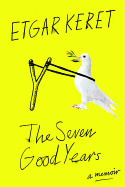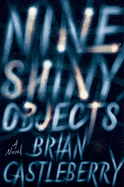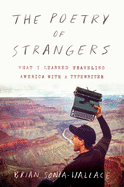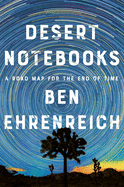 |
| photo: Kenneth Dolin |
Lacy Crawford is the author of the novel Early Decision. She graduated from St. Paul's School in Concord, N.H., in 1992, and Notes on a Silencing (just published by Little, Brown; reviewed below) is her memoir about what happened to her there and why she decided to talk about it now.
You begin the book in the third person, as if observing your aggravated felonious sexual assault from a remove. Can you talk about that choice?
There are two answers. I was very sensitive to any suggestion of self-pity or grandiosity. I'm thinking always of other survivors, especially those who didn't have the resources that I have, or had. There's a community of us out here, so opening in the third person allowed me to put it on the page in a way that was objectively horrifying without requesting sympathy from the start. That was important to me to do.
It's also true that I've had to continually generate sympathy for the girl I was, for letting them do that to me. Objectifying the situation in that way allowed me to do that. When I wrote the book, it was not so much to interpret the events, but to walk through it with her again.
I left her as surely as they did. I didn't want to be there, and I had to go back and get her.
The way you constructed your book allows us to go on the journey with you, as you realize more about the power structure of St. Paul's School, its influence on you and its force against you. How did you arrive at the structure of the book?
It took 25 years to figure that out. One of the things I wrestled with is that my knowledge of what happened to me is completely uninteresting. I didn't want to hang the telling on the particulars of the assault, chronologically: I was 15, they were 18; we were all sober. The facts had never been disputed. It was important to me to get that out of the way right away.
There were two puzzles I'd been trying to solve. The first is, I know what happened, they know what happened. Is there any way I can tell it that will remove some of the poison, take away the power?
The second puzzle was this: The boys bragged about it starting the next morning. The school knew. Everyone knew it was illegal. No one had a problem with me until I spoke up and said I hadn't wanted it to happen. That's when the slander began. It was fine with everyone but me.
And it took time for you to speak up.
I didn't tell anyone for months. I was complicit in that silence. Once I spoke up, the machinery of the school switched on against me. Suddenly, I'm kicked out of the school. I'd never understood my role in the puzzle of that silencing, the administration, the teachers. It was all finished by the time I graduated at age 16. It was only when I heard from the Concord [N.H.] police that I learned of the silencing. In telling this story I wanted to trace all the different valences of power that made for the silencing, including my own complicity. I needed to pause at the assault, right up front.
 At one point you write, "The simplest way I can tell the story of my assault is to describe how the boys made me feel I was no longer a person. Their first violation was erasure." You use that term again after your parents attempt to confront the school: "This time the erasure was committed by men whose power over me was socially conferred rather than physically wielded."
At one point you write, "The simplest way I can tell the story of my assault is to describe how the boys made me feel I was no longer a person. Their first violation was erasure." You use that term again after your parents attempt to confront the school: "This time the erasure was committed by men whose power over me was socially conferred rather than physically wielded."
Toni Morrison [who selected Crawford for a writing workshop] was describing what it felt like for her to write a scene in which there was a lynched body hanging in a tree. What she said was, you don't describe the person, the murder victim--you describe the branches against the sky. The reason you do that is, if you really understand what happens there, it's like looking at the sun. You can't see that. What you remember is a detail adjacent to it. You remember the branches.
With traumatic witnessing, our brain scatters around and looks at the things we can digest. For me, thinking about how I had been erased helped me think about how to reassert myself in so many different ways. I was losing weight, I couldn't eat, my throat was searing. Why couldn't I say it? The minute I talked about it the whole school would turn against me. I wasn't wrong.
After my mom had called the school and before the police had been contacted, the school put together a committee but never talked to me. Several of the men in that room I had never met. The school enacted the precise form of erasure the boys did.
You wrote: "The work of telling is essential, and it is not enough. There is always the danger that the energy of the injustice will exhaust itself in the revelation--that we will be horrified but remain unchanged."
I saw what they did to Chessy Prout [also a sexual assault survivor who attended St. Paul's School] and I realized how much unfinished business there was, in me and elsewhere. And with #MeToo, bigger and bigger people were being revealed. Every time one of these breaks, we're all horrified, but nothing changes.
We already know. That's not the problem. The things they're doing are not the problem. The danger of rape testimony is that we allow ourselves to look at something, like Matt Lauer, whom we all thought we knew, or Harvey Weinstein, because he's such an ogre. What makes the rape worth hearing about? What should be extraordinary is that it happens to one in four women. That story doesn't sell.
Even with my book, what are the pegs? St. Paul's. That's a hook. There's an ongoing investigation. That's a hook. If you want your voice to be heard, you have to hit those targets. My point is that's exactly why it needs to be told, because there are so many stories that need to be told.
That's the point--how common this is. We get titillated by any of the social markers--Chanel Miller is the "Stanford rape victim." Why? Because it happened at Stanford. I didn't want my story to be yet another marketable story in this "gosh I can't believe it." This is a way of looking at the branches, not the body.
I don't write about the boys as monsters. We were all of us in this wildly unhealthy system. There's this binary #MeToo and male backlash situation. It's a far more complex conversation, predicated on the assumption that women take the blame for male aggression. I tried to make this about the institutional machinery of silencing, and how we are all of us part of this. It's a portrait of the way an entire community can make the victim take the blame. This is not bad actors versus good actors. This is about a community that has to change. --Jennifer M. Brown, senior editor, Shelf Awareness
Lacy Crawford: 'I Had to Go Back and Get Her'
 There are the seven marriages in Taylor Jenkins Reid's novel The Seven Husbands of Evelyn Hugo (Washington Square Press, $17), about an aging star's remembrance of her many romances. Evelyn Hugo must not be confused with Evelyn Hardcastle, the titular center of Stuart Turton's The 7 1/2 Deaths of Evelyn Hardcastle (Sourcebooks Landmark, $16.99). How can one die more than one time, and what's a half death, you ask? You'll have to get lost in the nesting-doll-like stories of this many-layered mystery to find out.
There are the seven marriages in Taylor Jenkins Reid's novel The Seven Husbands of Evelyn Hugo (Washington Square Press, $17), about an aging star's remembrance of her many romances. Evelyn Hugo must not be confused with Evelyn Hardcastle, the titular center of Stuart Turton's The 7 1/2 Deaths of Evelyn Hardcastle (Sourcebooks Landmark, $16.99). How can one die more than one time, and what's a half death, you ask? You'll have to get lost in the nesting-doll-like stories of this many-layered mystery to find out. Despite its title, Marlon James's A Brief History of Seven Killings (Riverhead, $18) contains far more than seven killings, though it starts with the attempted killing of Bob Marley by seven--yes, seven--unidentified gunmen. There's also The Seven or Eight Deaths of Stella Fortuna by Juliet Grames (Ecco, $17.99), which appears to reference a far more metaphorical take on the concept of multiple deaths in this story of immigration and family.
Despite its title, Marlon James's A Brief History of Seven Killings (Riverhead, $18) contains far more than seven killings, though it starts with the attempted killing of Bob Marley by seven--yes, seven--unidentified gunmen. There's also The Seven or Eight Deaths of Stella Fortuna by Juliet Grames (Ecco, $17.99), which appears to reference a far more metaphorical take on the concept of multiple deaths in this story of immigration and family. The deaths in Seven Fallen Feathers (House of Anansi, $18.95) are heartbreakingly real, as journalist Tanya Talaga peels back the not-so-buried racist history of residential schools in Northern Canada by examining the unsolved deaths of seven Indigenous students between 2000 and 2011. Equally moving, though for entirely different reasons, is Jennifer Finney Boylan's memoir Good Boy: My Life in Seven Dogs (Celadon, $26.99),in which she recalls her childhood, gender transition and family life through the lens of the seven dogs who taught her the meaning of love. In another memoir, The Seven Good Years (Riverhead, $16), Israeli writer Etgar Keret offers a collection of essays focusing on the seven years between the birth of his son and the death of his father, considering his identity, family and history with a sense of humor and wit. --Kerry McHugh, freelance writer
The deaths in Seven Fallen Feathers (House of Anansi, $18.95) are heartbreakingly real, as journalist Tanya Talaga peels back the not-so-buried racist history of residential schools in Northern Canada by examining the unsolved deaths of seven Indigenous students between 2000 and 2011. Equally moving, though for entirely different reasons, is Jennifer Finney Boylan's memoir Good Boy: My Life in Seven Dogs (Celadon, $26.99),in which she recalls her childhood, gender transition and family life through the lens of the seven dogs who taught her the meaning of love. In another memoir, The Seven Good Years (Riverhead, $16), Israeli writer Etgar Keret offers a collection of essays focusing on the seven years between the birth of his son and the death of his father, considering his identity, family and history with a sense of humor and wit. --Kerry McHugh, freelance writer



 At one point you write, "The simplest way I can tell the story of my assault is to describe how the boys made me feel I was no longer a person. Their first violation was erasure." You use that term again after your parents attempt to confront the school: "This time the erasure was committed by men whose power over me was socially conferred rather than physically wielded."
At one point you write, "The simplest way I can tell the story of my assault is to describe how the boys made me feel I was no longer a person. Their first violation was erasure." You use that term again after your parents attempt to confront the school: "This time the erasure was committed by men whose power over me was socially conferred rather than physically wielded." Rudolfo Anaya, "who helped launch the 1970s Chicano Literature Movement with his novel Bless Me, Ultima," died June 28 at age 82, the
Rudolfo Anaya, "who helped launch the 1970s Chicano Literature Movement with his novel Bless Me, Ultima," died June 28 at age 82, the 










